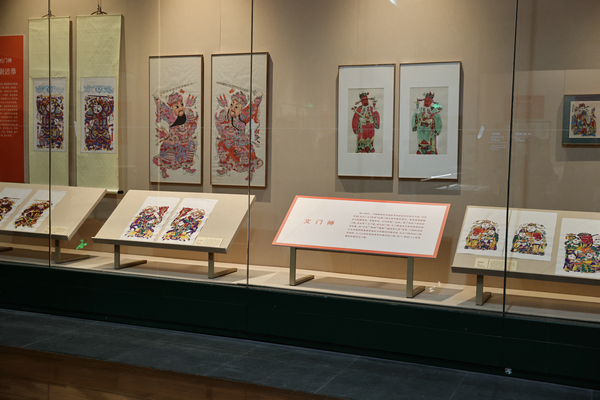

Figures with a sacred status that also appear in the New Year pictures can include saints and immortals from Confucian, Buddhist and Taoist beliefs, as well as a number of "gods" that oversee various areas of life and business.
Among them, Zhong Kui, who is a mythological demon-killer, and Guan Yu, a general in the late Eastern Han Dynasty (25-220), who was later elevated to divine status following the Song Dynasty (960-1279), are famous examples.
Besides figures in human form, animals deemed auspicious also have a place in New Year pictures, including the dragon, tiger, deer, crane, goat, monkey, lion and cat. For example, a picture featuring the cat and butterfly expresses a wish for longevity, because maodie, or the names of the two animals (mao meaning cat and die meaning butterfly) joined together, is a homophone of the word pertaining to very old age — from 80 to 90. Additionally, the cat, by catching the mouse, guards the grains, and the silkworm that produces the materials for textile products.
Mortals followed divine figures, and began to appear in the New Year pictures, as people paid more attention to their own lives and development.
During the Ming and Qing dynasties, many such pictures depicted beautiful women living a desirable life. In the pictures, they can be seen visiting quiet, natural surroundings, or staying in an exquisite room. They are often pictured doing embroidery, playing a musical instrument or chess, painting, nurturing children or enjoying some form of performance.
The most memorable New Year pictures, however, are perhaps those featuring one or more cherubic babies, often depicted holding a big fish, which express the hope of having a large family. Fish and lotus flowers in those pictures both have auspicious connotations.
New-style New Year pictures were first created in the liberated areas during the War of Resistance Against Japanese Aggression (1931-45) in line with the political, military and economic needs.